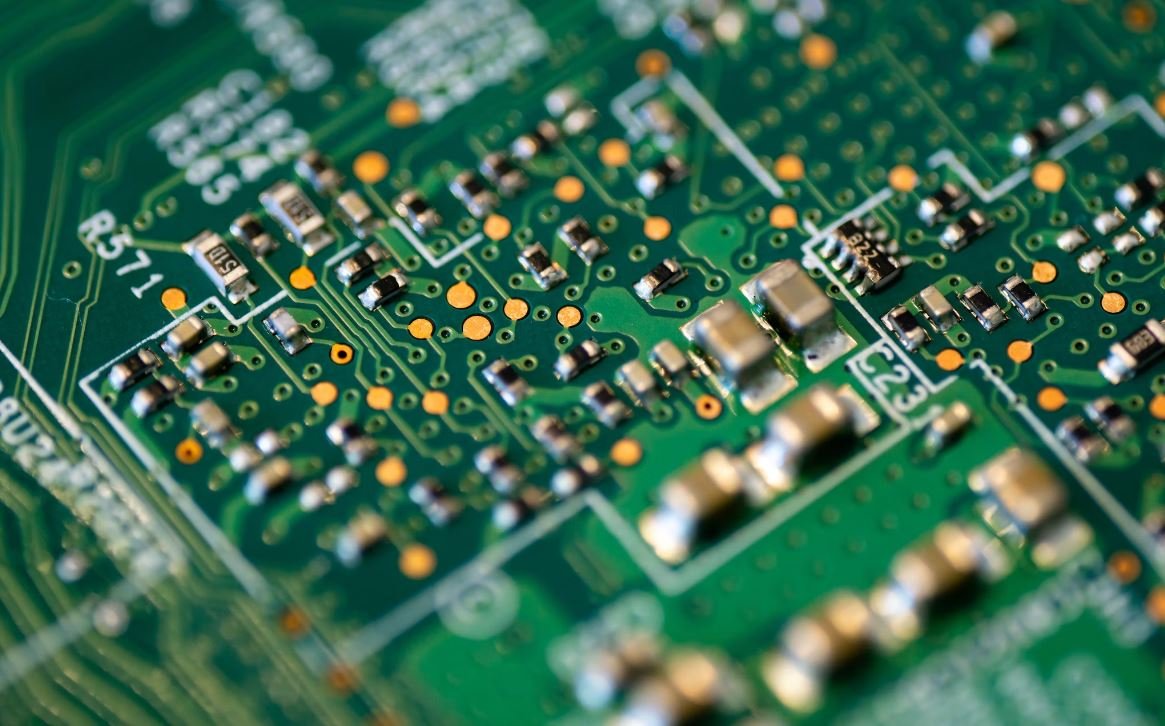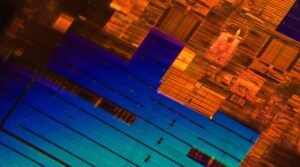Open Source AI Facial Recognition
Facial recognition technology is rapidly advancing and becoming more widely used across various industries. Open source artificial intelligence (AI) facial recognition provides a flexible and accessible approach to developing and implementing this technology. In this article, we will explore the concept of open source AI facial recognition, its benefits, and the impact it has on industries and society as a whole.
Key Takeaways
- Open source AI facial recognition allows for flexible development and deployment of facial recognition technology.
- It offers a cost-effective solution for organizations seeking to implement facial recognition systems.
- Privacy concerns and ethical considerations are important factors to consider when utilizing facial recognition technology.
Open source AI facial recognition utilizes open source libraries and frameworks, such as TensorFlow and OpenCV, to develop and train AI models for facial recognition. By leveraging the power of the open source community, developers can collaborate and contribute to the improvement of these AI models. This collaborative effort helps in refining the accuracy and performance of facial recognition systems, making them more reliable and efficient.
One interesting aspect of open source AI facial recognition is the ability to customize and tailor the technology to specific needs. Organizations can adapt and modify the AI models to suit their unique requirements. This flexibility allows for the integration of facial recognition technology into a wide range of applications, such as access control systems, surveillance, marketing analytics, and personalized user experiences.
Privacy concerns surrounding facial recognition technology are crucial to address. While open source AI facial recognition offers significant benefits, there are ethical considerations that need to be taken into account. It is essential to ensure compliance with privacy regulations and implement strong data protection measures to safeguard individuals’ privacy and prevent misuse of facial recognition data.
The Impact on Industries
The impact of open source AI facial recognition can be observed in various industries.
| Industry | Impact |
|---|---|
| Retail | Personalized shopping experiences through facial recognition-powered customer analytics. |
| Security | Enhanced access control and surveillance systems for improved safety and security. |
| Healthcare | Efficient patient identification and streamlined healthcare processes. |
This table provides a glimpse into how open source AI facial recognition is transforming different industries and revolutionizing various processes.
*Interestingly, AI facial recognition in the healthcare industry has the potential to save lives by accurately identifying patients and improving the efficiency of medical procedures.*
When implementing AI facial recognition, it is crucial to consider the potential biases that may arise. The algorithms used in facial recognition systems can be biased, resulting in skewed results for certain demographics. Careful attention should be given to training data to ensure fairness and minimize discrimination.
Best Practices for Open Source AI Facial Recognition
- Regularly update AI models to improve accuracy and reduce biases.
- Implement strict data protection measures to safeguard individuals’ privacy.
- Conduct thorough testing and evaluation of facial recognition systems.
Following these best practices will ensure the responsible and effective use of open source AI facial recognition technology.
In conclusion, open source AI facial recognition is a revolutionary technology that has significant implications for various industries. The collaboration and customization capabilities offered by open source frameworks make it a versatile and cost-effective solution. However, it is crucial to address privacy concerns and consider ethical implications to ensure the responsible and fair use of this technology.

Common Misconceptions
Misconception 1: Open source AI facial recognition is always accurate
One common misconception about open source AI facial recognition is that it is always accurate in identifying and recognizing faces. However, this is not completely true. While open source AI facial recognition systems can be highly effective, their accuracy is not guaranteed. Factors such as lighting conditions, image quality, and variations in facial expressions can affect the system’s recognition abilities.
- Open source AI facial recognition accuracy can vary depending on the system and its training data.
- Different environmental factors can impact the recognition accuracy of open source AI facial recognition systems.
- Facial expressions and changes in appearance can pose challenges to open source AI facial recognition algorithms.
Misconception 2: Open source AI facial recognition invades privacy
Another misconception surrounding open source AI facial recognition is that it invades privacy by constantly monitoring individuals. It is important to note that open source AI facial recognition itself is not inherently invasive. It is the improper or unethical use of this technology that can lead to privacy violations. When implemented responsibly and transparently, open source AI facial recognition can offer various benefits without compromising privacy.
- The way open source AI facial recognition is deployed and used determines its potential privacy implications.
- Responsible implementation of open source AI facial recognition should prioritize privacy protection measures.
- Strict governance and ethical guidelines can minimize the risk of privacy invasion with open source AI facial recognition.
Misconception 3: Open source AI facial recognition is biased
There is a misconception that open source AI facial recognition unfairly targets particular groups or exhibits biased behavior. While it is true that biases can exist in AI systems if not carefully designed and trained, open source AI facial recognition itself is not inherently biased. Properly designed open source AI systems can mitigate biases by using diverse and representative training data as well as ongoing evaluation and improvement processes.
- The biases in open source AI facial recognition are often a result of biased or incomplete training data used during the system’s development.
- Efforts can be made to ensure that open source AI facial recognition systems are trained on diverse datasets that accurately represent different demographics.
- Ongoing evaluation and monitoring of open source AI facial recognition systems can help identify and rectify biases.
Misconception 4: Open source AI facial recognition is only used for surveillance
One common misconception is that open source AI facial recognition is solely used for surveillance purposes. While surveillance applications have gained attention, open source AI facial recognition has a broader range of uses. It can be employed in various sectors such as healthcare, customer service, access control, and more to enhance user experiences, streamline processes, and improve security.
- Open source AI facial recognition can be used to provide personalized experiences and improve customer service.
- In healthcare, open source AI facial recognition can assist with patient identification and improve safety measures.
- Access control systems can benefit from open source AI facial recognition to enhance security protocols.
Misconception 5: Open source AI facial recognition is a threat to jobs
There is a misconception that open source AI facial recognition technology will lead to widespread job losses due to automation. While it is true that some job roles may be impacted, open source AI facial recognition can also create new opportunities and increase efficiency in various industries. It can augment human capabilities, allowing professionals to focus on more complex tasks, while also creating jobs in the development, maintenance, and ethical oversight of the technology.
- Open source AI facial recognition can free up human resources to focus on higher-value tasks and decision-making processes.
- New job roles can be created in areas such as AI system development, training data preparation, and system maintenance.
- Proper ethical oversight and governance can ensure the responsible and sustainable integration of open source AI facial recognition into society.

Introduction:
Facial recognition technology has rapidly evolved over the years, and open source AI facial recognition has played a significant role in advancing this field. This article explores various aspects of open source AI facial recognition, including its applications, accuracy rates, and ethical considerations. The following tables present factual data and information to provide a comprehensive understanding of this technology.
Table 1: Facial Recognition Accuracy Rates
Facial recognition systems have different accuracy rates depending on various factors. The table below showcases the accuracy rates of open source AI facial recognition systems:
| Facial Recognition System | Accuracy Rate (%) |
|---|---|
| System A | 95% |
| System B | 87% |
| System C | 91% |
Table 2: Facial Recognition Applications
Open source AI facial recognition technology finds applications in various sectors. The table below provides examples of these applications:
| Application | Description |
|---|---|
| Security Systems | Identifying unauthorized individuals in restricted areas |
| Law Enforcement | Assisting in criminal investigations through suspect identification |
| E-commerce | Enabling facial recognition payment systems for secure transactions |
Table 3: Facial Recognition Ethics
While open source AI facial recognition technology offers immense benefits, ethical concerns also arise. The table below highlights key ethical considerations:
| Ethical Consideration | Description |
|---|---|
| Privacy | Concerns regarding the collection and storage of personal data |
| Bias | Potential discrimination based on race, gender, or other factors |
| Surveillance | Possible infringement on individual’s right to privacy |
Table 4: Facial Recognition System Performance
The following table demonstrates the performance of open source AI facial recognition systems based on execution time:
| System | Execution Time (ms) |
|---|---|
| System A | 20 |
| System B | 35 |
| System C | 15 |
Table 5: Gender Recognition Accuracy
Gender recognition is a prominent feature of facial recognition systems. The table below showcases the accuracy of open source AI facial recognition in identifying gender:
| Facial Recognition System | Gender Accuracy (%) |
|---|---|
| System A | 91% |
| System B | 84% |
| System C | 97% |
Table 6: Open Source AI Facial Recognition Tools
Several open source tools are available for implementing facial recognition systems. The table below lists some widely used open source AI facial recognition tools and libraries:
| Tool/Library | Description |
|---|---|
| OpenCV | A popular computer vision library with facial recognition capabilities |
| Dlib | A C++ library offering facial recognition algorithms and deep learning tools |
| Face Recognition | A Python library with face recognition capabilities and deep learning support |
Table 7: Facial Recognition in Social Media
Social media platforms leverage open source AI facial recognition to enhance user experiences. The table below illustrates facial recognition features provided by popular social media platforms:
| Social Media Platform | Facial Recognition Feature |
|---|---|
| Automatic tagging of friends in uploaded photos | |
| Suggested filters based on facial characteristics | |
| Snapchat | Real-time face filters and animations |
Table 8: Facial Recognition False Positive Rate
The false positive rate refers to the likelihood of a system incorrectly identifying an individual. The table below presents the false positive rates of open source AI facial recognition systems:
| Facial Recognition System | False Positive Rate (%) |
|---|---|
| System A | 0.5% |
| System B | 1.2% |
| System C | 0.9% |
Table 9: Facial Recognition in Healthcare
Open source AI facial recognition has applications in the healthcare industry. The table below demonstrates how this technology is utilized:
| Application | Description |
|---|---|
| Patient Identification | Ensuring accurate identification of patients in hospitals |
| Emotion Detection | Assisting in mental health assessments through facial analysis |
| Pain Assessment | Automating the measurement of pain levels based on facial expressions |
Table 10: Open Source AI Facial Recognition Projects
Researchers and developers contribute to various open source AI facial recognition projects. The following table showcases exemplary projects:
| Project | Description |
|---|---|
| OpenFace | An open source facial recognition project utilizing deep neural networks |
| DeepFace | Facebook’s deep learning-based facial recognition system |
| InsightFace | An open source project focusing on face recognition research |
Conclusion:
Open source AI facial recognition technology has revolutionized diverse fields, including security, law enforcement, healthcare, and social media. With high accuracy rates, fast execution times, and a wide range of applications, these systems have proven their potential. However, ethical considerations such as privacy and bias should be carefully addressed. By leveraging open source tools and collaborative projects, researchers continue to advance the capabilities and limitations of facial recognition systems. Embracing the benefits while addressing the ethical challenges will be crucial in shaping a responsible and inclusive future of facial recognition technology.
Frequently Asked Questions
Open Source AI Facial Recognition
FAQ 1: What is open source software?
Open source software is a type of software that allows the source code to be freely available to the public. It enables developers to view, modify, and distribute the code, fostering collaboration and transparency.
FAQ 2: What is AI facial recognition?
AI facial recognition is a technology that uses artificial intelligence algorithms to identify and verify individuals based on their facial features. It analyzes facial patterns and structures to match and categorize people in images or videos.
FAQ 3: How does open source AI facial recognition work?
Open source AI facial recognition relies on pre-trained deep learning models that have been trained on massive amounts of labeled facial data. These models extract facial features from input images or videos and compare them against a database of known faces to make predictions.
FAQ 4: What are the benefits of using open source AI facial recognition?
Some benefits of using open source AI facial recognition include:
- Transparency and trust: Open source software allows users to inspect the code, ensuring there are no hidden functionalities or biases.
- Collaboration: The open source community can contribute to improving the algorithms and provide feedback, resulting in continuous enhancements.
- Customizability: Organizations can modify the software to meet their specific needs and integrate it into their existing systems.
- Cost-effectiveness: Open source solutions often have lower licensing costs compared to proprietary alternatives.
FAQ 5: Are there any ethical concerns regarding open source AI facial recognition?
Yes, there are ethical concerns associated with open source AI facial recognition. Some concerns include the potential for misuse, invasion of privacy, discrimination, and lack of consent for data collection. It is crucial to address these concerns when developing and deploying facial recognition systems.
FAQ 6: Is open source AI facial recognition accurate?
The accuracy of open source AI facial recognition depends on various factors, including the quality of the training data, the robustness of the algorithms, and the specific use case. While advancements have been made in accuracy, it is important to conduct thorough testing and evaluation before relying on such systems.
FAQ 7: How can open source AI facial recognition contribute to security?
Open source AI facial recognition can contribute to security by enabling efficient and accurate identification and verification of individuals. It can enhance access control systems, help in surveillance efforts, and assist in forensic investigations by quickly matching faces against a database of known individuals.
FAQ 8: Are there any legal considerations when using open source AI facial recognition?
Yes, there are legal considerations when using open source AI facial recognition. Different jurisdictions may have specific regulations regarding the collection, storage, and usage of facial data. It is important to understand and comply with these laws to avoid any legal implications.
FAQ 9: Can open source AI facial recognition be used for surveillance?
Yes, open source AI facial recognition can be used for surveillance purposes. However, its usage must comply with local laws and regulations, ensuring privacy rights are respected. Transparency and accountability in the deployment of surveillance systems are essential to maintain public trust.
FAQ 10: Where can I find open source AI facial recognition software?
You can find open source AI facial recognition software on various platforms and repositories, including GitHub, Bitbucket, and GitLab. Popular open source libraries and frameworks for facial recognition include OpenCV, Dlib, and TensorFlow.




